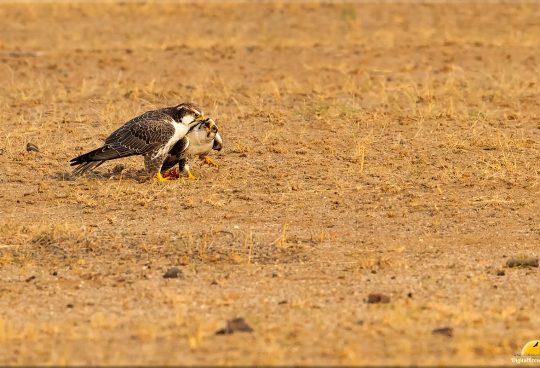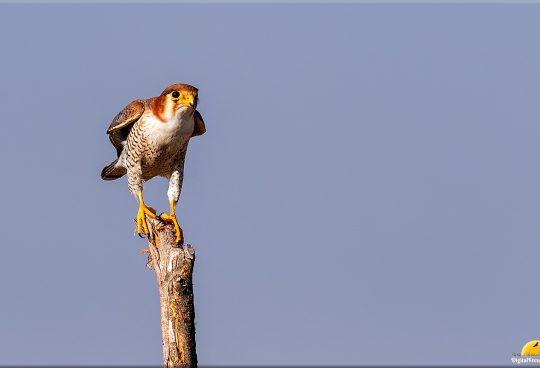The mountain hawk-eagle or Hodgson’s hawk-eagle (Nisaetus nipalensis, earlier treated under Spizaetus) is a bird of prey. Like all eagles, it is in the family Accipitridae. It breeds in the Indian subcontinent, from India, Nepal (hence the epithet nipalensis) through Bangladesh to Thailand, Taiwan, Indonesia and Japan.
The mountain hawk-eagle is a medium-large raptor. The typical adult has brown upperparts and pale underparts, with barring on the undersides of the flight feathers and tail. The breast and belly and underwing coverts are heavily streaked. The wings are broad with a curved trailing edge, and are held in a shallow V in flight. Sexes are similar, but young birds are often whiter-headed. The heavier underpart streaking and wing shape help to distinguish this species from the similar crested hawk-eagle.
This eagle is It is a bird of mountain woodland and mostly found in dense foothill and montane evergreen and mixed deciduous forests, mostly from 600–4000 meters. Mountain hawk-eagles eat small mammals, birds and reptiles. It takes a wide variety of small to medium-sized mammals, especially hares and including even monkeys. Both adults have similar appearance, but the female is larger than male. The juvenile is much paler with pale to light buff head and underparts, darker streaks on crown, hindneck and head sides, and buff-barred rump. The underwing-coverts are creamy-white. The fledgling has greyish-blue irises, becoming pale yellow at 3 years, and almost yellow at 4-5 years. Later, with the age, they become deep orange. It is classified as least concern by IUCN however and not globally threatened.
![]()






Sorry, the comment form is closed at this time.